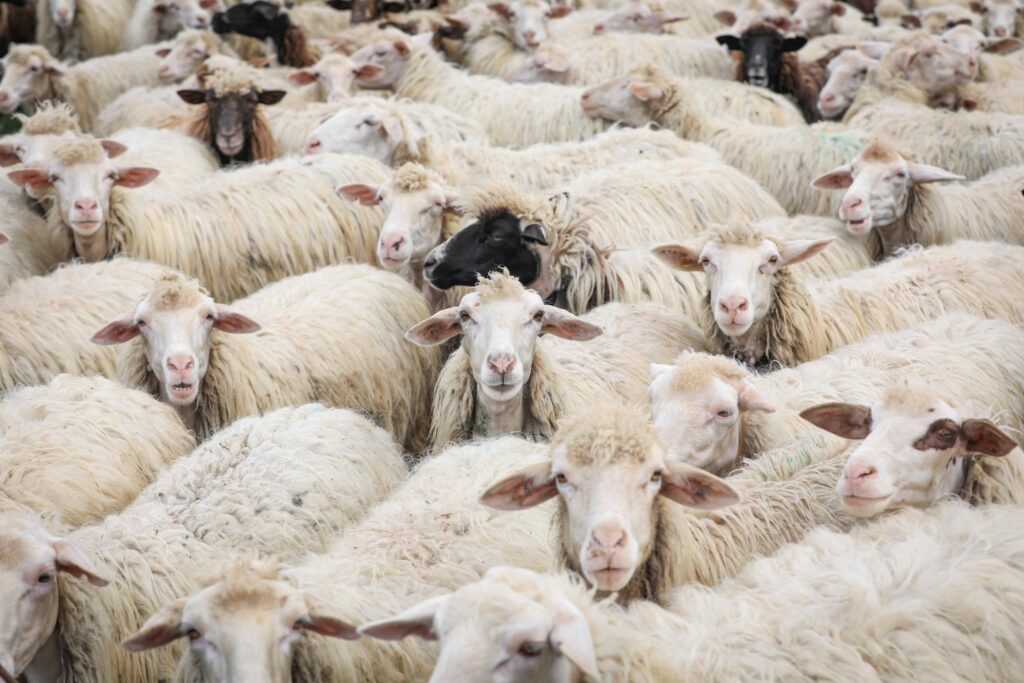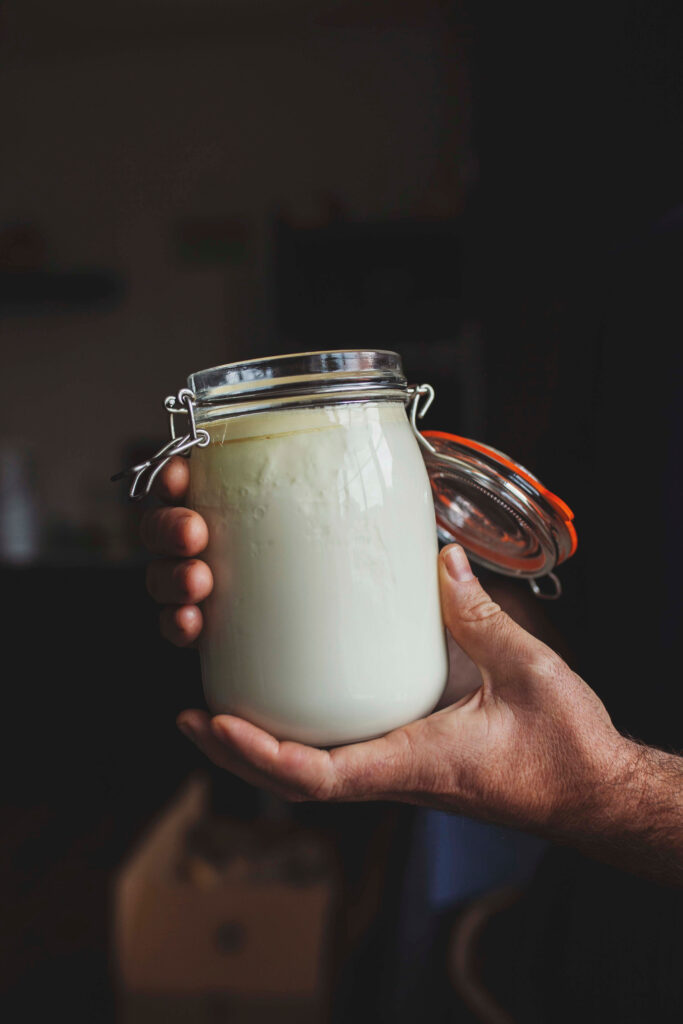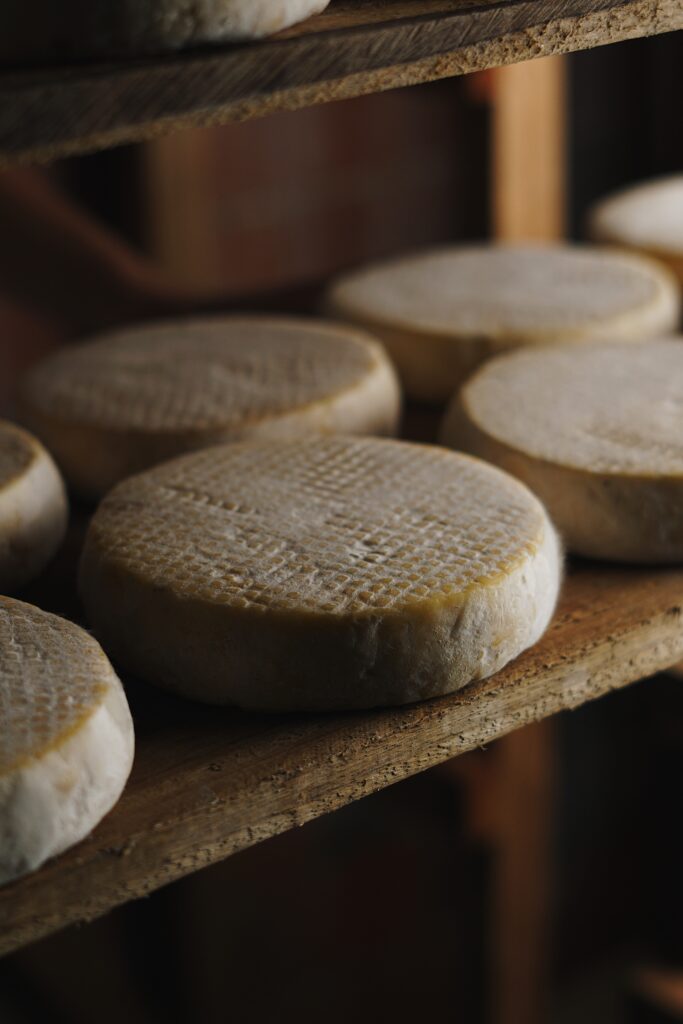Review: Milk Into Cheese by David Asher
Milk Into Cheese: The Foundations of Natural Cheesemaking Using Traditional Concepts, Tools, and Techniques, by David Asher
A substantial book that showcases cheesemaking through storytelling and technique, and also brings the politics of natural cheesemaking to the page. I've had the pleasure of reviewing this book for the British Columbia Review.
This article was originally published for the BC Review on May 22, 2025.
***
David Asher’s Milk Into Cheese is an invitation to delve not only into the how of making cheese, but the why: Why we should make milk into cheese, why each step works, and why we should take a deeper look at how cheesemaking brings us closer to nature and the land. At its essence this is Asher’s love letter to cheesemaking in all its traditional forms, and arguably, his manifesto on natural cheesemaking using unpasteurized milk fresh from the udder, as far away from the industrial dairy complex as you can get. The challenge for Asher is to extol the virtues of natural cheesemaking, while at the same time offering a book that holds appeal for the casual cheesemaker who’d like to experiment with more techniques, and learn a bit in the process. Happily, I think he succeeds.
He begins with a clear statement on his core principles.
"This book explores in depth the four foundations of natural cheesemaking, the philosophies that allow cheese to take its truest, most delicious form: using methods based on traditional cultural practices; using the freshest possible, least processed milk; coagulating with natural rennet from the stomachs of young animals; and introducing a natural fermentation with milk’s own community of microbes. In other words, the cultural (the hand) and the agricultural (the milk); the biological (the rennet) and the microbiological (the ferment)."
 |
| Author and cheesemaker David Asher has ties to the Gulf Islands. Photo Chloe Gire |
Asher explores these four crucial elements of natural cheese, and I was captivated. First, it is biological. Asher’s storytelling ability shines as he spins the narrative of the lactating mother and the baby, showing how biological processes within a calf transform mother’s milk into a nourishing, digestible food. The temperatures, acidity, enzymes, and microbiology in the calf’s stomach all combine to transform milk, paralleling what cheesemakers do. This explanation is impactful because in this context, the cheesemaking steps become logical. “We humans didn’t invent cheese; we simply stumbled across the biological phenomenon and adopted it, even perfected it, into our cultural practices through the development of dairying processes.”
Cheese is agricultural, a continuum that includes the land, the grazing animals, the reproduction and lactation of those animals, and the cheese that is made from their milk. The animals in the pasture give back to the soil. “Cheese is not a fancy food, but an agrarian one. It is a way of life, defined by and refined by farmers and pastoralists, that has travelled around the world along with other primary agricultural techniques, domesticated animals, grain crops, and diverse vegetables.”
 |
| The process is a natural one, one that takes place in the stomachs of grazing animals, such as these sheep, argues David Asher. “Cheese is not a fancy food, but an agrarian one. It is a way of life, defined by and refined by farmers and pastoralists, that has travelled around the world along with other primary agricultural techniques, domesticated animals, grain crops, and diverse vegetables,” writes Asher. Photo Courtesy of Sinnos Formaggi |
When he discusses the microbiological aspects of cheese, Asher’s words evoke the amazing sensuality of this singular food. Mild, sweet milk is coagulated, and then varied microbes bring exciting tastes to the different cheeses. It’s fermentation, a microbial magic, that transforms milk. “Mildly sweet lactose is broken down by lactofermenting bacteria into tangy lactic acid, which in turn is metabolized by yeasts and fungi on the rind into expressive esters, ketones, and alcohols. Its fats are broken down or lipolysis by microbes into more flavorful and nutritious fatty acids; the proteins are proteolyzed into the richest umami notes…”
And finally, cheese is cultural. Asher wants us to consider the cultural context of different cheeses, as it is the “particular way farmers handle their milk that defines the evolution and flavor development of their cheeses.”
He recognizes that his methods of natural cheesemaking can’t be practiced by everyone, and in many places, using unpasteurized milk to make cheese for sale is not legal. At the beginning of the book, Asher embraces the moniker “dietary revolutionary.” Acknowledging that his views may be controversial, he notes the book isn’t, “meant to shame established cheesemakers that practice the standard model of production.” Asher extends an invitation to these makers to explore ways to incorporate natural techniques into their processes, to “democratize and decolonize” cheesemaking for all.
Milk Into Cheese isn’t a scientific treatise on cheesemaking, though he attempts to keep his philosophy consistent with current microbiological understanding. In a book that advocates using unpasteurised milk, safety will be top of mind for many, including myself. Asher addresses this somewhat: “This book’s intent is to show that the practice of natural cheesemaking makes any milk safe to consume. Pasteurization should not be seen as the only pathway toward safely produced dairy. There is another way, and that is small-scale, well-informed, and well-practiced natural cheesemaking!” Asher posits that each step of natural cheesemaking, if done with care and good techniques, promotes food safety, though that is about as far as the safety discussion goes. I would have liked a bit more.
 |
| Milk, a key ingredient. Milk Into Cheese contains chapters on milk, cultures, and rennet. Photo Courtesy of Max Jones |
The book’s layout is logical and easy to follow. Chapters on milk, cultures, and rennet serve as a deep dive into each ingredient. It’s fascinating reading, which continues into Part II, “Making and Aging” cheeses. I decided to try my hand at making cheese from the book, so I studied these chapters before I started. Asher shows how each step in the cheese making process is necessary and logical. His words on salting the cheese, for example, were at once exact–salting at 2% by weight–but also hands-on: “An easy way, therefore, to judge for 2 percent is with your tongue. Two percent salt tastes satisfyingly salty, without an offensive saltiness.” Some techniques, like “affinage” (ripening) were too advanced for me, but will serve as an excellent reference for more serious cheesemakers.
In the second half of the book, Asher turns to the making of various cheeses; essentially the recipes. Asher isn’t kidding when he writes, “Techniques in this book can be exceedingly challenging or remarkably simple.” Indeed, if one aspired to his ideal of using milk directly from the udder, almost no casual reader would attempt the recipes. “This sort of cheesemaking is remarkably simple to practice–it truly makes itself, so long as the right ingredients can be sourced; if, however, they cannot, I recognize that this may be the most impossible cheesemaking book that has ever been written.” Levity aside, he concedes that perfection should not be the enemy of the good, and that pasteurized milk can be used if that’s what you have.
 |
| The final result. Reviewer Trish Bowering writes “these pages offer plenty of fodder for contemplation, especially regarding the politics of cheese, ideas that will hopefully spark discussion.” Photo Courtesy of Queijaria Belafazenda |
The recipes are not home-cheesemaker friendly in all cases. If you want to make a Comté, I suspect you’re out of luck: you’ll need 200 L of milk and up to two years to age it. As Asher notes, “Comté is a mountain cheese with a most challenging ascent.” Fascinating to read about, impossible for me to make. Instead, I chose to make cream cheese, for which I needed only 4 L of milk, some kefir for culture, and rennet.
His approach is not at all traditional, often using kefir and yogurt to culture the cheese rather than packaged bacterial cultures, and I suspect that this gives extremely varied results. I followed Asher’s instructions to the letter and had a lot of fun with the steps, but after two days, my finished product looked and tasted more like a cottage cheese than cream cheese. It lent itself to lots of uses: a topping for my salad, filling for a delicious vegetarian lasagne, and an ingredient in a ricotta cake.
Milk Into Cheese brings cheesemaking to life, with Asher’s passion for teaching and his engaging style. Whether or not one agrees with his approach, these pages offer plenty of fodder for contemplation, especially regarding the politics of cheese, ideas that will hopefully spark discussion. Local, small-scale food production is likely to be more important as our world changes, and a book like this serves a tangible purpose: to educate about why cheese is an important traditional food, and show how it can be produced naturally. This empowers each of us to assume some control over making our own food if desired.
"I found a hole in our understanding of cheese, and so, I decided to fill it. And here I am now, teaching the world to make cheese naturally, sharing what I’ve learned through careful observation and intuition; adapting techniques and ideas from other realms of fermentation; and feeling my way through the fog."
His approach is not at all traditional, often using kefir and yogurt to culture the cheese rather than packaged bacterial cultures, and I suspect that this gives extremely varied results. I followed Asher’s instructions to the letter and had a lot of fun with the steps, but after two days, my finished product looked and tasted more like a cottage cheese than cream cheese. It lent itself to lots of uses: a topping for my salad, filling for a delicious vegetarian lasagne, and an ingredient in a ricotta cake.
Milk Into Cheese brings cheesemaking to life, with Asher’s passion for teaching and his engaging style. Whether or not one agrees with his approach, these pages offer plenty of fodder for contemplation, especially regarding the politics of cheese, ideas that will hopefully spark discussion. Local, small-scale food production is likely to be more important as our world changes, and a book like this serves a tangible purpose: to educate about why cheese is an important traditional food, and show how it can be produced naturally. This empowers each of us to assume some control over making our own food if desired.
"I found a hole in our understanding of cheese, and so, I decided to fill it. And here I am now, teaching the world to make cheese naturally, sharing what I’ve learned through careful observation and intuition; adapting techniques and ideas from other realms of fermentation; and feeling my way through the fog."



Comments
Post a Comment